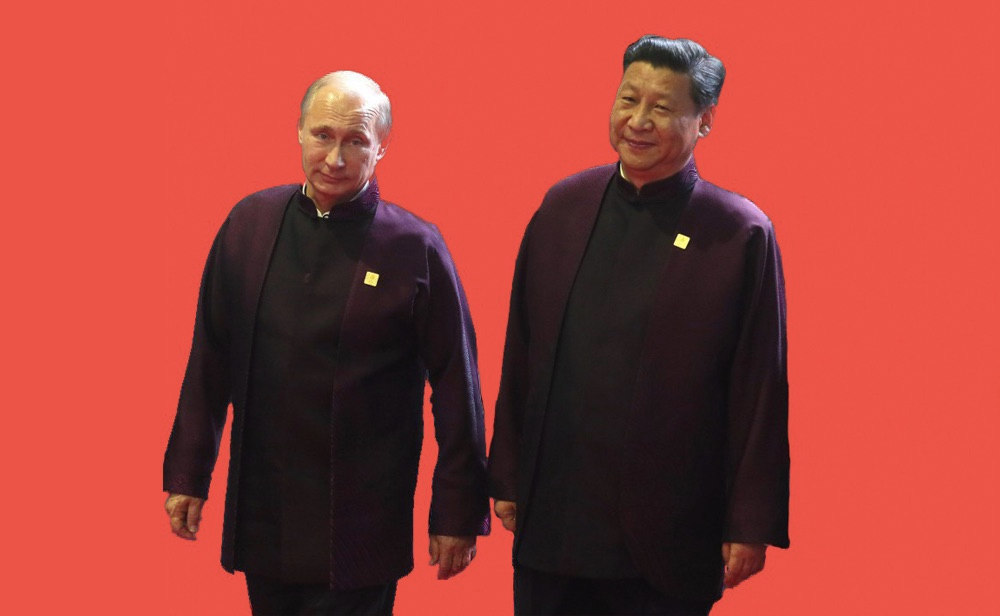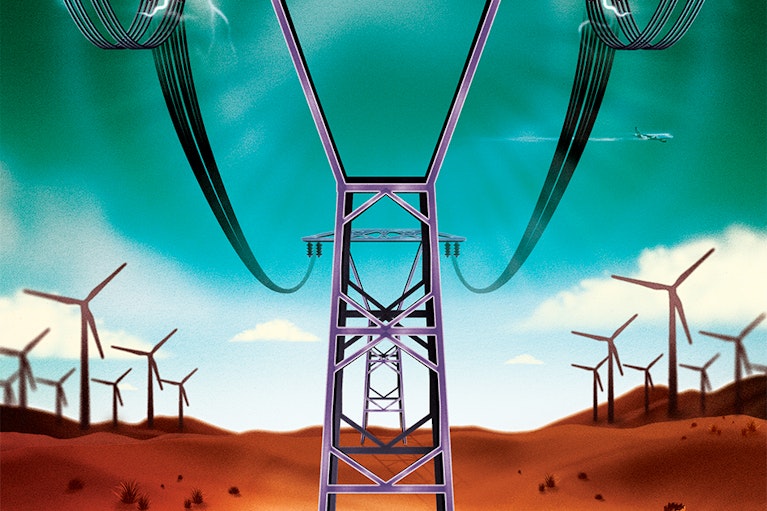Artyom Lukin is a professor of international politics at the Far Eastern Federal University in Vladivostok, Russia.
VLADIVOSTOK, Russia — In September 2013, when Chinese President Xi Jinping rolled out the concept of the Silk Road Economic Belt, Moscow reacted with apprehension. The Kremlin was concerned that China’s grand initiative would compete with its own project, the Eurasian Economic Union, which sought to reintegrate the post-Soviet space under Moscow’s aegis. The fact that Xi gave his Silk Road speech in Astana, the capital of Kazakhstan, made Moscow even more uncomfortable — Kazakhstan is the biggest and richest country in Central Asia, it shares a long border with Russia and is viewed by Moscow as a key ally.
How the Ukraine crisis made Russia embrace the Silk Road
For a while, Moscow seemed undecided on how to respond to the new Silk Road narrative. But the 2014 Ukraine crisis changed the Kremlin’s calculus. Confrontation with the West and Russia’s deteriorating economy due to U.S.-led sanctions and falling oil prices left Moscow little choice.
Another blow was the loss of Ukraine as a potential participant in Russian-led integration arrangements. Without Ukraine, the second-largest post-Soviet economy and a market of about 44 million people, Moscow’s hopes to create an integrated bloc that would be on par with the European Union and other centers of global economic power were essentially dashed. Lacking a market of sufficient size to create its own viable geo-economic area, Russia was left with the only option of moving into another nation’s economic orbit.
After some initial hesitation, Russia joined the China-controlled Asian Infrastructure Investment Bank in March 2015. But the most decisive step came a few months later in May, when Xi and Russian President Vladimir Putin met in Moscow to pledge to work toward a “link-up” between Russia’s Eurasian Economic Union and China’s Silk Road Economic Belt.
Two years later, Putin became the main guest of honor at the One Belt, One Road summit in Beijing to provide a stamp of international endorsement of China’s Eurasian ambitions. In his address to the forum, which immediately followed Xi’s opening speech, Putin welcomed China’s initiative.
Still, while praising the Belt and Road plan, Moscow is keen to prevent Beijing’s geopolitical domination of continental Eurasia. Instead of wholeheartedly subscribing to China’s scheme, the Kremlin promotes its own vision of “a larger Eurasian partnership” or “Greater Eurasia,” a network of existing and emerging “integration formats.” Beijing’s Belt and Road would be just one element, alongside the Eurasian Economic Union, the Shanghai Cooperation Organization, the Association of Southeast Asian Nations and potentially even the European Union.
Composing the concert of powers in Eurasia
As always, Moscow’s main game is political rather than economic. The Kremlin understands too well that in the trade and finance realm, Russia’s position in Eurasia is much weaker than China’s. Russia’s crucial strengths traditionally lie in the political-military and diplomatic domains. Hence, leaving economic initiatives to China, Moscow strives for the role of the chief architect of a Eurasian political and security order that would reflect its own preferences and coincide with the basic interests of the continent’s major powers.
The kind of political order Russia envisions for Eurasia is essentially one of a concert of powers, a model that hails from 19th century Europe and places a premium on relations among a few major countries: Russia, China, India and — with some qualifications — Pakistan, Iran and maybe Turkey. Accounting for the bulk of continental Eurasia’s population, landmass and military potential, the six big players should collectively manage security and economic affairs of the mega-region.
Russia aspires to be the main security and diplomatic broker in Eurasia while leaving China with the role of the economic leader. As one observer put it, “China would be the bank, and Russia would be the big gun.” Such an arrangement might harken back to the history of the European Community, when France acted as the political leader while West Germany was the economic engine. Moscow’s preference for a new Eurasian order is reflected in its diplomatic activism, such as its leading role in securing the admission of India and Pakistan into the Shanghai Cooperation Organization and in advocacy for the future membership of Iran.
Comprising Eurasia’s most powerful non-Western nations, “Greater Eurasia” is being imagined as the antithesis to the Western-dominated world order. All the members of the prospective Eurasian concert — with the important exception of India — are autocracies or illiberal democracies. Beijing may well like the notion of illiberal Eurasian continentalism. It is far less clear if China accepts the Russian idea that Chinese preeminence should somehow be constrained and balanced within a political concert of major powers.
From the Central Asian steppes to the Arctic Ocean
Despite initial misgivings in Moscow, China’s penetration of Central Asia under the Silk Road banner has not, so far, done any substantial harm to Russian interests. If anything, Russia benefits from it — Chinese cargos bound for Europe traverse Kazakhstan and then transit through the Russian railway network. Just like Russia itself, Central Asian “stans” are moving extremely cautiously with respect to China’s calls for a free trade area, fearing their economies will be devoured by the Chinese dragon. Most significantly, populations in Central Asia, particularly in Kazakhstan and Kyrgyzstan, exhibit high levels of Sinophobia that by far exceed any resentment they might feel toward Russian imperialism.
Central Asian nations are not going to abandon Russia in favor of China. Most likely, they will need Moscow even more to hedge against Beijing’s rising economic influence.
Central Asia is not the only area where the Silk Road intersects with Moscow’s vital interests. China is increasingly setting its sights on the Arctic. This is where the third arch of the Belt and Road, in addition to the continental corridor across Eurasia and the Indo-Pacific maritime route, could be laid.
China has declared itself a “Near-Arctic State” and aims to build a “Polar Silk Road.” Russia appears ambivalent on China’s Arctic ambitions. On the one hand, the extreme north is regarded by Russia as a sanctuary critical to the country’s security and national identity. On the other hand, Russia’s economic growth is more and more dependent on exploitation of Arctic resources.
The Arctic development requires huge investments, such as funding the building of powerful ice breakers. With Russia strapped for cash, China seems to be the only realistic source of financing. It may not be by chance that China’s single biggest investment in Russia has been in the Yamal LNG project on the Siberian Arctic coast — the world’s coldest liquefied natural gas plant, in which Beijing acquired a major stake and provided $12 billion in loans, even as the project was under U.S. sanctions.
Putin and Xi are equals, but their economies are not
Russia is hugged by China’s Silk Roads in its Central Asian underbelly and in the Arctic north, and so far, its response seems to be to accept the embrace. Moscow seems to have calculated that the potential benefits outweigh the risks. As for public sentiment, there have been incidents when local citizens protested a “Chinese invasion,” but the general attitude in Russia toward China is positive. According to recent polls, China is viewed as second only to Belarus among Russia’s best friends. Just 2 percent of Russians see China as an enemy, probably because the slot for the main foe is solidly occupied by the U.S., at 68 percent.
Apart from seeing the U.S. as the common adversary, the Sino-Russian axis is boosted by an apparent personal bond between Putin and Xi. Since 2013, they have met dozens of times, arguably making them the most formidable and efficient pair among modern world leaders.
However, their closeness cannot conceal the reality that China’s economy is more than eight times bigger than Russia’s, and the gap continues to grow. It remains to be seen if, in the long run, this economic asymmetry will develop into political inequality, with Russia becoming a tributary state along China’s Silk Roads.
This was produced by The WorldPost, a partnership of the Berggruen Institute and The Washington Post.




